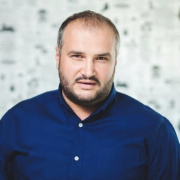

Amazon AWS and Red Hat OpenShift on IBM Cloud are leading contenders in the cloud services domain. AWS tends to have the upper hand due to its global reach and vast ecosystem appealing to businesses seeking scale and diversity, whereas OpenShift attracts organizations focused on hybrid cloud strategies and container management.
Features: Amazon AWS offers services like EC2 for computing power, S3 for storage, and a customizable networking capability that supports a wide range of operating systems. Red Hat OpenShift on IBM Cloud excels with its Kubernetes-based container orchestration, advanced developer tools, and seamless DevOps integration that cater specifically to cloud-native application development.
Room for Improvement: Amazon AWS could enhance its user experience by offering more personalized training, simplifying complex configurations, and improving the interface for beginners. Red Hat OpenShift on IBM Cloud would benefit from expanding its global presence, offering more flexible pricing options, and enhancing its usability for less technical users to broaden its appeal.
Ease of Deployment and Customer Service: Amazon AWS provides a mature deployment environment with extensive documentation that facilitates onboarding, and its customer support is robust. Red Hat OpenShift on IBM Cloud stands out with its streamlined container orchestration and significant automation, providing an intuitive platform for developers engaged in DevOps and CI/CD pipelines, though it could enhance its support for non-container environments.
Pricing and ROI: AWS features a pay-as-you-go model with various discounts, contributing to broader budget accommodation and an often immediate ROI. In contrast, Red Hat OpenShift on IBM Cloud has higher pricing that reflects its specialized services and hybrid capabilities but can offer greater long-term ROI in container-focused environments. This highlights AWS's flexible pricing vis-a-vis OpenShift's commitment to tailored cloud-native solutions.
| Product | Market Share (%) |
|---|---|
| Amazon AWS | 13.8% |
| Red Hat OpenShift on IBM Cloud | 0.6% |
| Other | 85.6% |


| Company Size | Count |
|---|---|
| Small Business | 131 |
| Midsize Enterprise | 48 |
| Large Enterprise | 112 |
| Company Size | Count |
|---|---|
| Midsize Enterprise | 2 |
| Large Enterprise | 6 |
Amazon Web Services (AWS) is an adopted cloud platform that offers more than 200 fully featured services from data centers located across the globe. This is a scalable, low-cost infrastructure platform in the cloud that is utilized by thousands of businesses of different sizes around the world. The product offers a wide variety of solutions for its customers, which allows them to launch applications regardless of their industry.
The most common use cases for AWS are:
Amazon AWS supports a global cloud infrastructure with AWS Region and Availability Zone models, which contribute to the high availability of enterprise applications running on the solution. Amazon AWS has an extensive array of products that serve different purposes, including:
The products and services that Amazon AWS delivers to these sectors provide a large computing capacity which is quicker and cheaper compared to building a physical server farm. Among the most popular services are Amazon Elastic Compute Cloud, also known as "EC2," and Amazon Simple Storage Service, also known as "S3."
Amazon AWS Features
The wide array of products that Amazon AWS offers consist of different functions that utilize cloud computing across different sectors. The features of this solution can be categorized in the following ways:
Amazon AWS Benefits
This product delivers various benefits across all industries that utilize its services. The greatest advantages of using Amazon AWS include:
Reviews from Real Users
Greg G., a chief executive officer at a tech services company, ranks Amazon AWS highly, as he states that the solution is flexible, scales well, and offers good stability.
A technology manager technology at a computer software company values Amazon AWS because it is extremely cost-efficient, easy to upgrade and expand storage with greatly improved interfaces.
Red Hat OpenShift on IBM Cloud™ is a fully managed OpenShift service that leverages the enterprise scale and security of IBM Cloud, so you can focus on developing and managing your applications.
Deploy highly available, OpenShift clusters as-a-service with the click of a button on IBM Cloud. Move and build OpenShift-based workloads on a managed public cloud service to gain increased responsiveness, scalability, and reliability.
We monitor all PaaS Clouds reviews to prevent fraudulent reviews and keep review quality high. We do not post reviews by company employees or direct competitors. We validate each review for authenticity via cross-reference with LinkedIn, and personal follow-up with the reviewer when necessary.